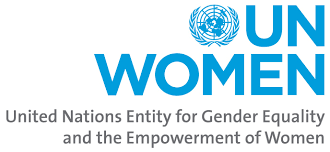Generally gender inequality refers to the unequal treatment or perceptions of individuals based on their gender. It arises from differences in socially constructed gender roles. The United Nations and WHO defines gender equality is the absence of discrimination on the basis of a person’s sex in opportunities, the allocation of resources and benefits, or access to services.
Gender equity refers to the fairness and justice in the distribution of benefits and responsibilities between women and men. The concept recognizes that women and men have different needs and power, and that these differences should be identified and addressed in a manner that rectifies the imbalance between the sexes. SEE: Equity Vs Equality: Understanding The Difference
Despite these gains, many challenges remain: discriminatory laws and social norms remain pervasive, women continue to be underrepresented at all levels of political leadership, and 1 in 5 women and girls between the ages of 15 and 49 report experiencing physical or sexual violence by an intimate partner within a 12-month period.
A United Nations Economic and Social Council (ECOSOC) resolution defines gender mainstreaming as:
“… the process of assessing the implications for women and men of any planned action, including legislation, policies or programmes, in any area and at all levels. It is a strategy for making women’s as well as men’s concerns and experiences an integral dimension in the design, implementation, monitoring and evaluation of policies and programmes in all political, economic and social spheres, such that inequality between men and women is not perpetuated. The ultimate goal is to achieve gender equality.”
“Mainstreaming gender is both a technical and a political process which requires shifts in organizational cultures and ways of thinking, as well as in the goals, structures and resource allocations…. Mainstreaming requires changes at different levels within institutions, in agenda setting, policy-making, planning, implementation and evaluation. Instruments for the mainstreaming effort include new staffing and budgeting practices, training programmes, policy procedures and guidelines.”
In 2009 the WHO headquarters gender web site added:
“If health care systems are to respond adequately to problems caused by gender inequality, it is not enough to simply ‘add in’ a gender component late in a given project’s development. Research, interventions, health system reforms, health education, health outreach, and health policies and programmes must consider gender from the beginning.”
“Gender is thus not something that can be consigned to ‘watchdogs’ in a single office, since no one office can possibly involve itself in all phases of an organization’s activities. All health professionals must have knowledge and awareness of the ways in which gender affects health, so that they may address gender issues wherever appropriate thus rendering their work more effective.”
“The process of creating this knowledge and awareness of – and responsibility for – gender among all health professionals is called ‘gender mainstreaming’.”
Gender equality is not only a fundamental human right, but a necessary foundation for a peaceful, prosperous and sustainable world.
There has been progress over the last decades: More girls are going to school, fewer girls are forced into early marriage, more women are serving in parliament and positions of leadership, and laws are being reformed to advance gender equality.
In 1979, the General Assembly adopted the Convention on the Elimination of All Forms of Discrimination against Women (CEDAW), which is often described as an International Bill of Rights for Women. In its 30 articles, the Convention explicitly defines discrimination against women and sets up an agenda for national action to end such discrimination. The Convention targets culture and tradition as influential forces shaping gender roles and family relations, and it is the first human rights treaty to affirm the reproductive rights of women.
Five years after the Mexico City conference, a Second World Conference on Women was held in Copenhagen in 1980. The resulting Programme of Action called for stronger national measures to ensure women’s ownership and control of property, as well as improvements in women’s rights with respect to inheritance, child custody and loss of nationality.
Birth of Global Feminism
In 1985, the World Conference to Review and Appraise the Achievements of the United Nations Decade for Women: Equality, Development and Peace, was held in Nairobi. It was convened at a time when the movement for gender equality had finally gained true global recognition, and 15,000 representatives of non-governmental organizations (NGOs) participated in a parallel NGO Forum.
The event was described by many as “the birth of global feminism”. Realizing that the goals of the Mexico City Conference had not been adequately met, the 157 participating governments adopted the Nairobi Forward-looking Strategies to the Year 2000. The document broke new ground by declaring all issues to be women’s issues.
Beijing Conference on Women
The Fourth World Conference on Women, held in Beijing in 1995, went a step further than the Nairobi Conference. The Beijing Platform for Action asserted women’s rights as human rights and committed to specific actions to ensure respect for those rights. Get involved with UN Women’s Generation Equality campaign to mark the 25th anniversary of the Beijing Declaration and Platform for Action.
Commission on the Status of Women
The Commission on the Status of Women (CSW) is the principal global intergovernmental body exclusively dedicated to the promotion of gender equality and the empowerment of women. The CSW is instrumental in promoting women’s rights, documenting the reality of women’s lives throughout the world, and shaping global standards on gender equality and the empowerment of women.
An Organization for women
On 2 July 2010, the United Nations General Assembly unanimously voted to create a single UN body tasked with accelerating progress in achieving gender equality and women’s empowerment. The new UN Entity for Gender Equality and the Empowerment of Women – or UN Women – merged four of the world body’s agencies and offices: the UN Development Fund for Women (UNIFEM), the Division for the Advancement of Women (DAW), the Office of the Special Adviser on Gender Issues, and the UN International Research and Training Institute for the Advancement of Women.
Women and the Sustainable Development Goals
Gender equality
The United Nations is now focusing its global development work on the recently-developed 17 Sustainable Development Goals (SDGs).Women have a critical role to play in all of the SDGs, with many targets specifically recognizing women’s equality and empowerment as both the objective, and as part of the solution.
Goal 5, to “Achieve gender equality and empower all women and girls” is known as the stand-alone gender goal, because it is dedicated to achieving these ends. Deep legal and legislative changes are needed to ensure women’s rights around the world. While a record 143 countries guaranteed equality between men and women in their Constitutions by 2014, another 52 had not taken this step.
Stark gender disparities remain in economic and political realms. While there has been some progress over the decades, on average women in the labour market still earn 20 per cent less than men globally. As of 2018, only 24 per cent of all national parliamentarians were female, a slow rise from 11.3 per cent in 1995.
Eliminating Violence Against Women
The UN system continues to give particular attention to the issue of violence against women. The 1993 General Assembly Declaration on the Elimination of Violence against Women contained “a clear and comprehensive definition of violence against women [and] a clear statement of the rights to be applied to ensure the elimination of violence against women in all its forms”. It represented “a commitment by States in respect of their responsibilities, and a commitment by the international community at large to the elimination of violence against women”.
Violence against women is a pandemic affecting all countries, even those that have made laudable progress in other areas. Worldwide, 35 per cent of women have experienced either physical and/or sexual intimate partner violence or non-partner sexual violence.
In September 2017, the European Union and the United Nations joined forces to launch the Spotlight Initiative, a global, multi-year initiative that focuses on eliminating all forms of violence against women and girls.
The International Day for the Elimination of Violence against Women is observed on 25 November.
Women’s Day and other observances
International Women’s Day is observed annually on 8 March. International Women’s Day first emerged from the activities of labour movements at the turn of the twentieth century in North America and across Europe. It is a day, observed by many countries around the world, on which women are recognized for their achievements without regard to divisions, whether national, ethnic, linguistic, cultural, economic or political.
Besides International Women’s Day and the International Day for the Elimination of Violence against Women, the UN observes other international days dedicated to raising awareness of different aspects of the struggle for gender equality and women empowerment. On February 6, the International Day of Zero Tolerance to Female Genital Mutilation is observed, February 11 is the International Day of Women and Girls in Science, June 19 is the International Day for the Elimination of Sexual Violence in Conflict, June 23 is International Widows’ Day, October 11 is the International Day of the Girl Child and on October 15 the International Day of Rural Women is observed.






